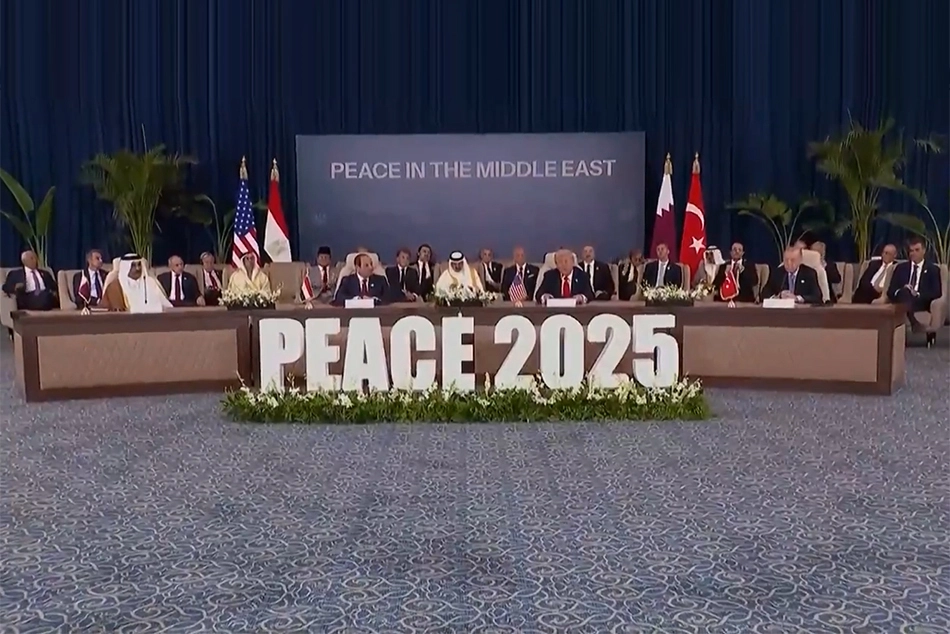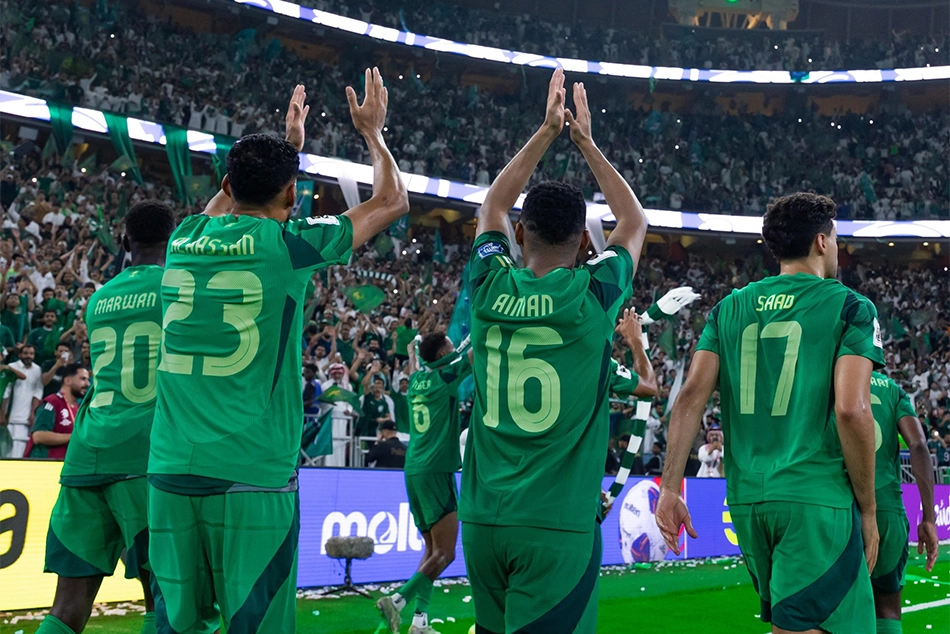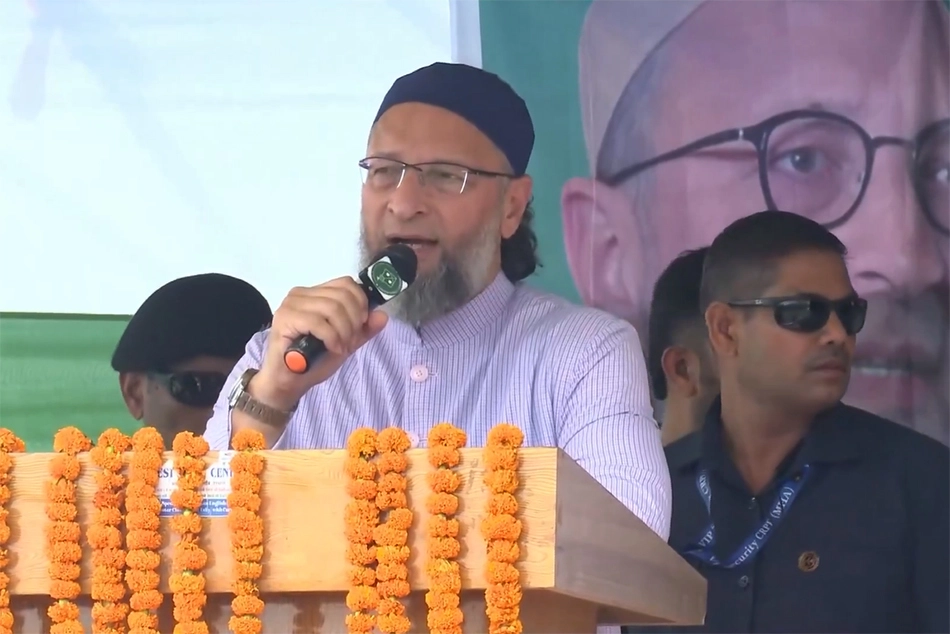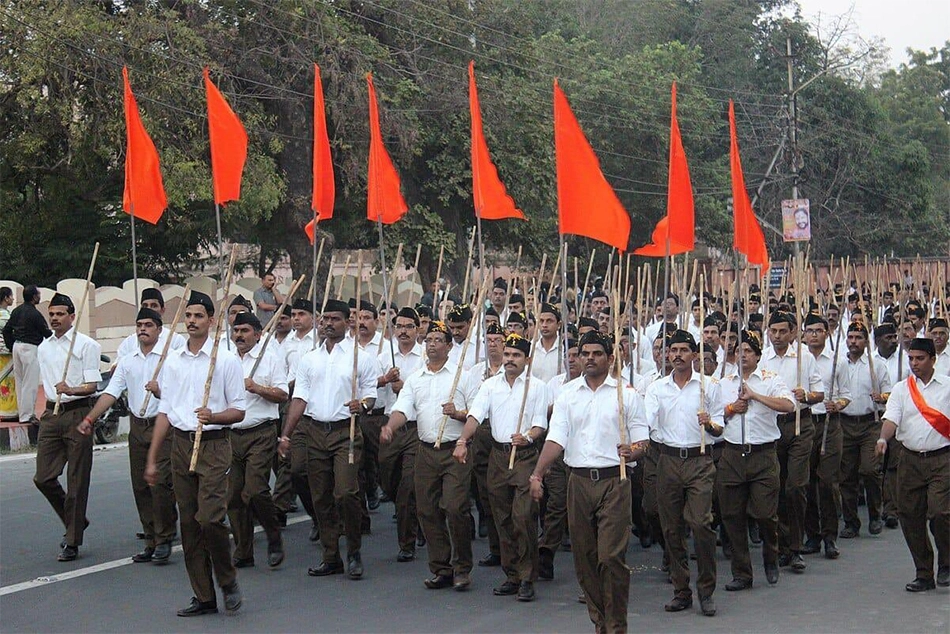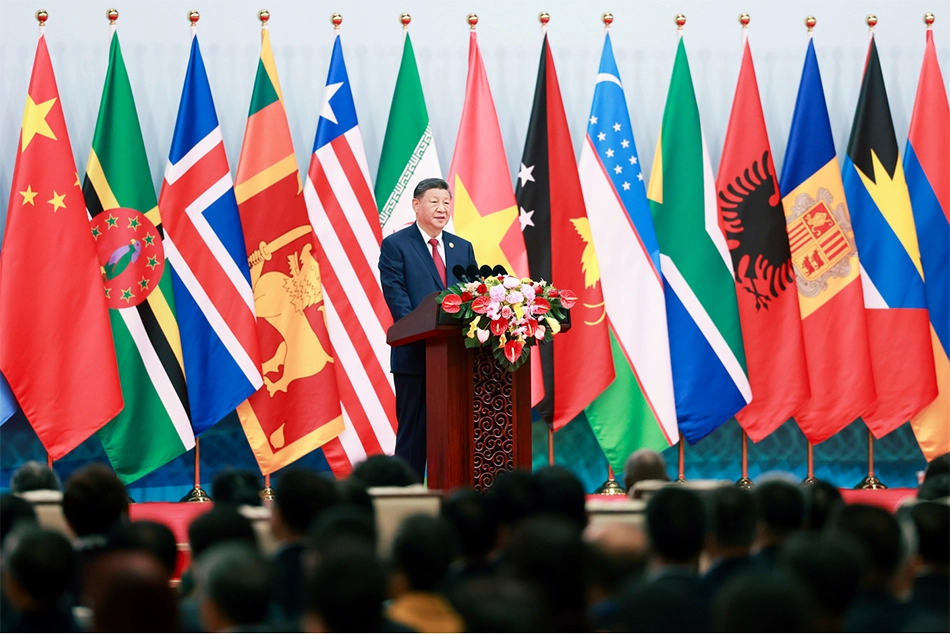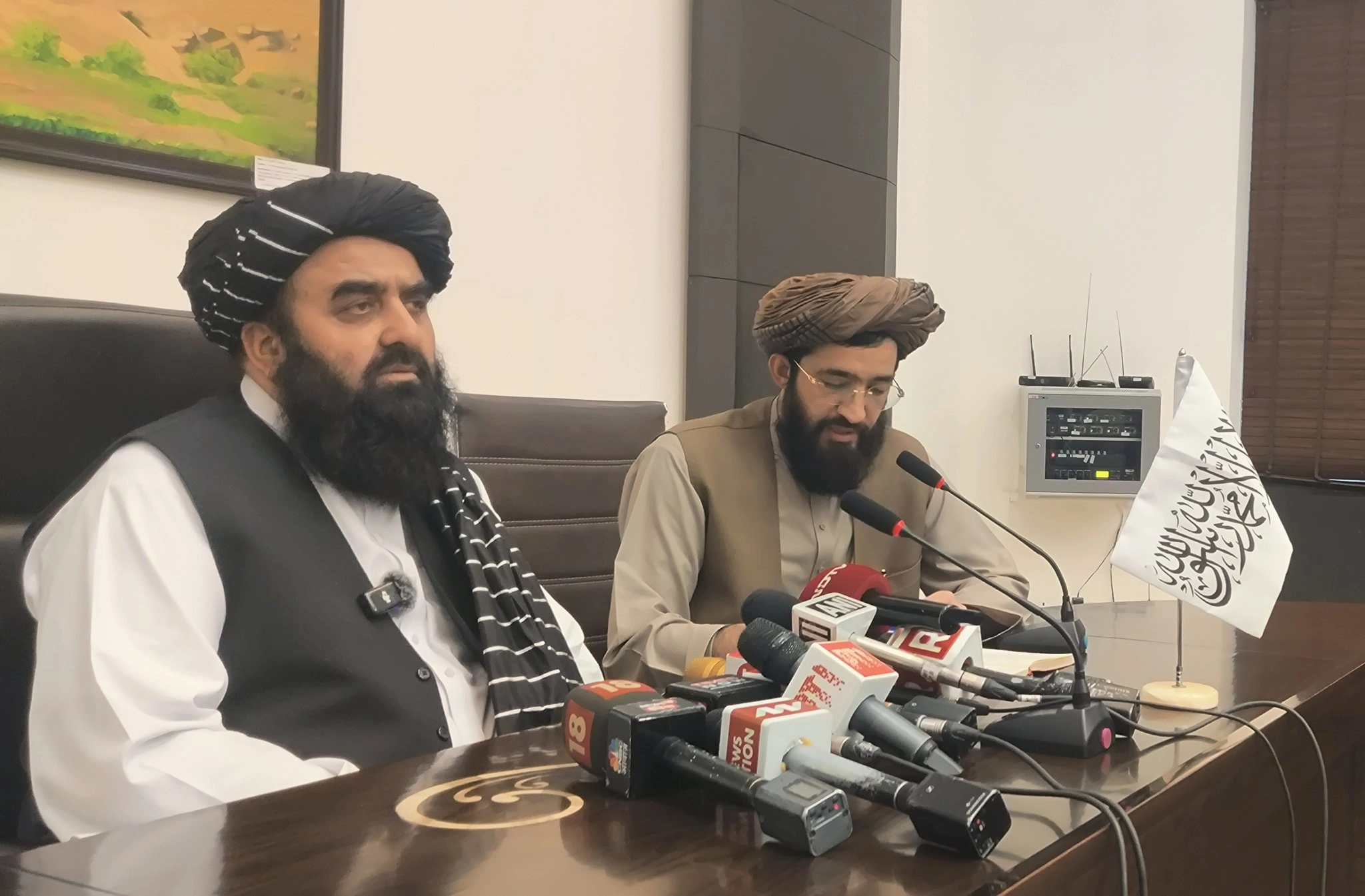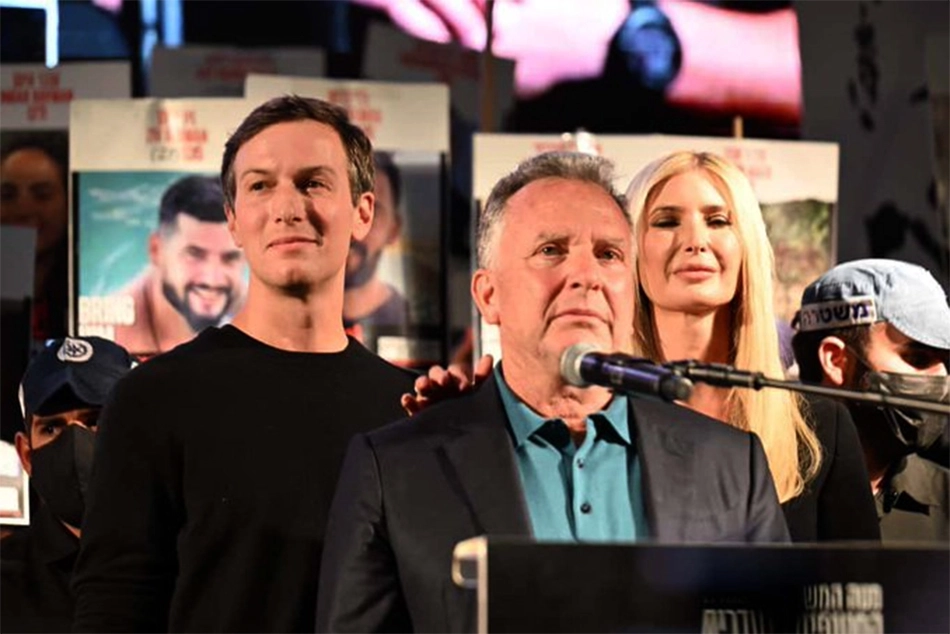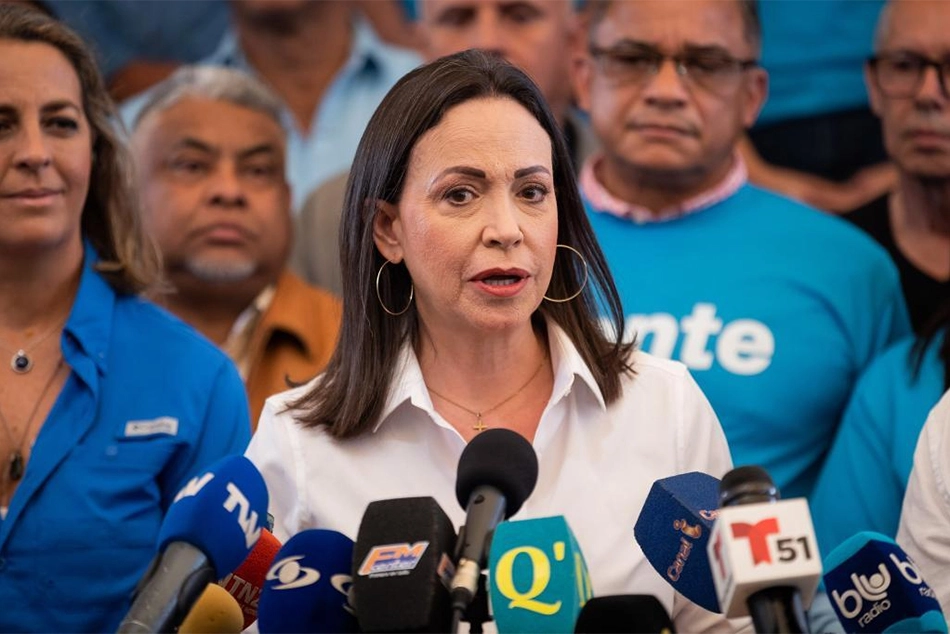
Examining The Destruction of Palestinian Education
This essay examines the destruction of Palestinian education as a deliberate strategy — not the byproduct of war, but a sustained assault on the right to learn, remember, and rebuild
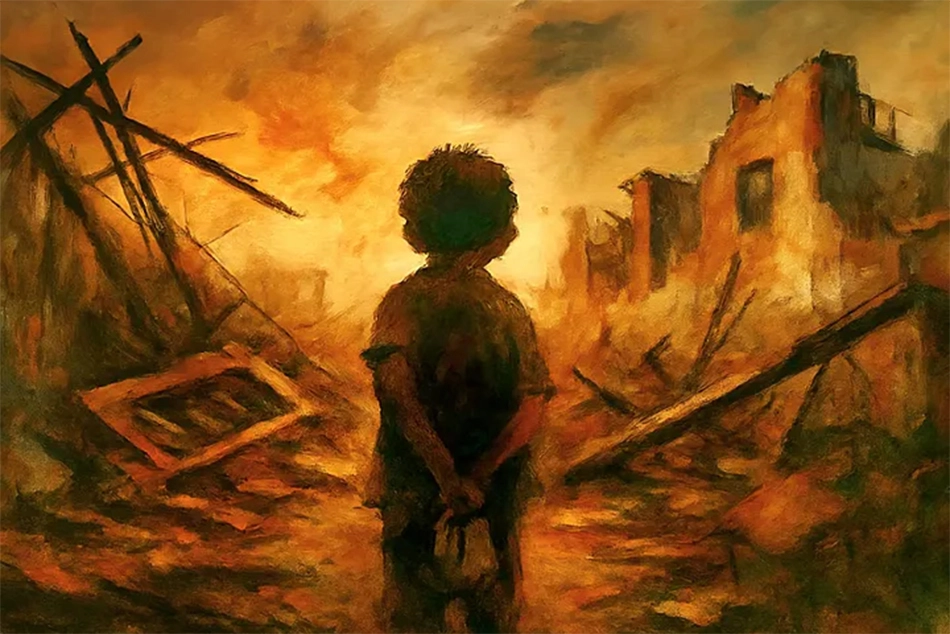
Author’s Note
This essay examines the destruction of Palestinian education as a deliberate strategy — not the byproduct of war, but a sustained assault on the right to learn, remember, and rebuild. In Gaza, this takes the form of physical annihilation: schools bombed, universities flattened, and entire generations cut off from classrooms.
In the West Bank, the assault is slower but no less calculated — carried out through arrests, campus raids, visa denials, and the isolation of universities from global academic life. Drawing on historical precedent and lived testimony, the essay argues that what is unfolding is not just a humanitarian crisis, but a political project: to sever a people from the knowledge, continuity, and collective future they have fought to preserve.
1. A Generation Without Classrooms
When U.S. General Curtis LeMay threatened to “bomb them back to the Stone Age” during the Vietnam War, the world recoiled at the brutality of the statement — even if the bombs fell anyway. The phrase became shorthand for military excess, for the fantasy of erasing a people’s future through firepower. But what Israel is doing in Gaza today is more insidious. It has dismantled the very systems that allow a society to regenerate. Israel’s campaign is not a return to the Stone Age. It is a campaign to prevent the future.
By targeting schools, killing teachers, blocking textbooks, and severing Gaza from its educated diaspora, Israel is not merely waging war — it is implementing a coherent strategy: to cut off Palestinians from the tools of memory, growth, and self-determination. The world condemned LeMay’s rhetoric. It must now confront the reality of its repetition — this time, not as threat, but as policy.
As of October 2025, UNICEF reports that 95% of Gaza’s schools have been damaged or destroyed, leaving 658,000 children out of school for nearly two years. Many of these children are not only displaced but orphaned: Save the Children estimates tens of thousands have lost one or both parents in the bombardments, creating what aid workers call “a generation of orphans without classrooms.”
A growing body of evidence from UN commissions, human rights organizations, and academic observers confirms that Israel’s destruction of Gaza’s education system is deliberate. The UN Independent International Commission of Inquiry declared in June 2025 that Israeli attacks on schools, universities, libraries, and cultural sites amount to war crimes and the crime against humanity of extermination.
Scholars have described this as scholasticide: the systematic targeting of education to eliminate the conditions for Palestinian continuity. From the assassination of professors to the looting of archives and the bombing of technical institutes, the pattern is clear. As one report from the Arab Center put it, Israel’s campaign seeks to “punish the Gaza Strip by depriving it of the means to educate its inhabitants and prepare them for the future.” This is not the collateral damage of war — it is the architecture of erasure.
Israel’s motivations are not hidden. In 2016, then–Education Minister Naftali Bennett declared, “We should stop apologizing. We are fighting an enemy — not an education system.” The message is chillingly clear: the suppression of education is not incidental — it is deliberate, a mechanism of domination. When schools are treated as extensions of the enemy, their destruction becomes not a tragedy, but a tactic. This is not the fog of war. It is the clarity of policy.
2. Trauma Without End
This trauma is not singular, it is cumulative. Isael has displaced Palestinian families multiple times, severing children from teachers, peers, and any sense of continuity. Psychologists working with UNICEF warn that prolonged displacement and the absence of structured learning have left children with acute anxiety, nightmares, and difficulty concentrating. Classrooms, once spaces of stability, have become sites of grief — where children remember classmates killed in airstrikes.
3. A Baseline of Ruin
This devastation did not begin in 2023. Today, Israel is building on a decade of systematic destruction, with one of the most formative ruptures occurring during Israel’s 2014 military offensive — ironically named Operation Protective Edge. The logic of “protecting Israelis” by obliterating their enemies in biblical style — leaving no cow, no child, no archive — is a theology of domination masquerading as security policy. It evokes the ancient command to annihilate Amalek or Canaan, where protection meant total erasure: not just of combatants, but of memory, lineage, and livelihood. In this frame, the enemy is not merely dangerous, it is existential, contaminating, unredeemable. And so the response is not containment, but purification.
This is the true meaning of being “bombed back to the Stone Age”: not a return to primitive tools, but the ritual elimination of continuity itself. Not rubble as aftermath, but as method.
That summer of 2014, over 500 children were killed, more than 3,000 injured, and 258 schools damaged or destroyed, including 26 UNRWA schools used as shelters.
The psychological toll was immediate. Children exhibited signs of PTSD: bedwetting, mutism, panic at the sound of drones. One girl, Nirmeen, whose home was destroyed in 2014, was still living in her father’s workshop five years later. Her story, documented by UNICEF, was emblematic of a generation forced to grow up in the rubble of their childhoods.
By 2019, nearly one million children in Gaza were affected by deteriorating conditions. There were not enough safe play areas, trained counselors, or intact classrooms to offer even the illusion of normalcy.
4. A System That Never Recovered
In Gaza, the education system never truly recovered. Makeshift repairs and temporary learning spaces could not restore the safety and continuity schools once provided. Children returned to classrooms with shattered windows, bullet-pocked walls, and empty desks where friends once sat. The trauma of 2014 became the baseline, not the exception. Every subsequent escalation — 2018, 2021, 2023 — deepened the wound.
So when we hear today that children suffer from “acute anxiety,” “nightmares,” and “difficulty concentrating,” we are not hearing something new. We are hearing the same alarm, sounded again and again, each time with the same words — because the world has refused to act.
This is not the first time education has been weaponized in war. In Bosnia, libraries were shelled and the University of Sarajevo besieged. In Afghanistan, the Taliban banned girls’ education. In Syria, schools became battlefields. But Gaza’s case is unique in its continuity: the repeated destruction of schools and universities, year after year, for decades. Not a single rupture, but a sustained campaign — a pedagogy of erasure.
5. The Erasure of Two Generations
To speak of Gaza’s “lost generation” is already devastating — but the phrase is too narrow. What is unfolding is the erasure of two generations: the children denied classrooms, and the educators killed or displaced who would have taught them.
As of mid-2025, the Palestinian Ministry of Education reported that over 400 teachers and school staff had been killed since the war began. UNRWA has described the death toll among its staff as “unprecedented in the agency’s history.” With so many educators gone, even emergency tent schools struggle to function.
Meanwhile, Palestinians from the diaspora — doctors, engineers, teachers — are denied entry by Israeli authorities. Professionals with foreign passports have been repeatedly blocked at Rafah and Erez crossings, separating Gaza from the very expertise it needs. As one UNRWA official told The Guardian, “We are watching a deliberate severing of Gaza from its own educated diaspora.”
6. The Occupation’s Daily Siege on Learning
Even when there is no war, Israel blocks textbooks from entering Gaza as part of its broader policy of controlling the flow of goods and information into the territory. Since the blockade began in 2007, educational materials — especially those produced by the Palestinian Authority — have been subject to scrutiny and frequent denial.
Israeli authorities routinely cite “incitement” and “antisemitism” in Palestinian textbooks as justification for these restrictions. But these accusations are not neutral assessments — they reflect a settler-colonial framework that seeks to delegitimize Palestinian historical memory and modes of resistance. Independent reviews, including a 2021 EU-funded study, found that the vast majority of textbooks met international standards, with only isolated instances of bias — many of which were later revised. What Israel deems “problematic” often includes references to the Nakba, depictions of resistance, or the absence of Israeli statehood on maps — elements that reflect Palestinian lived experience rather than incitement.
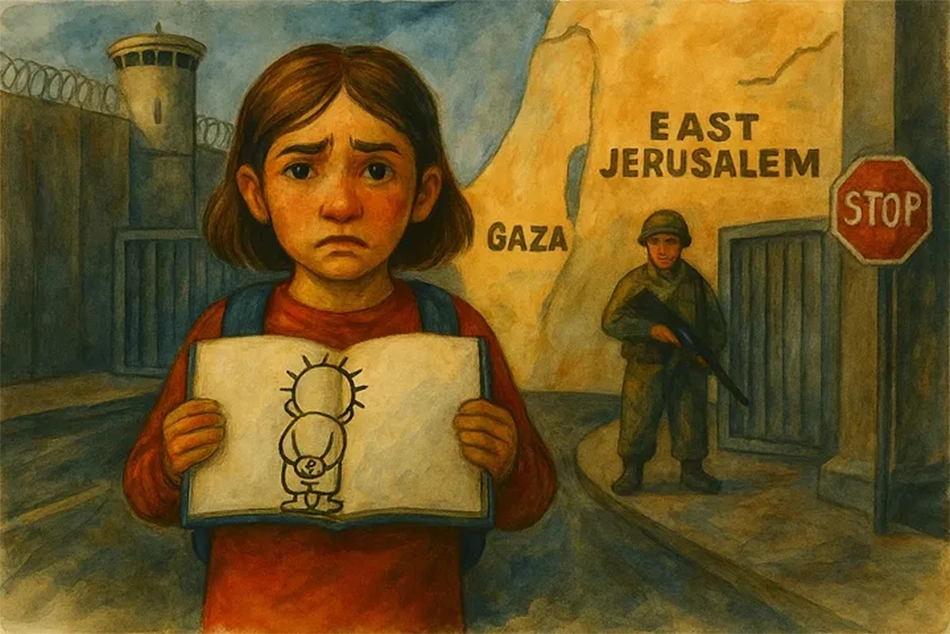
The blockade of educational materials, then, is less about content and more about control: a calculated effort to sever the transmission of collective memory, suppress national consciousness, and discipline the imagination of a besieged generation.
In the West Bank, Israel targets education through a matrix of control that criminalizes movement, censors knowledge, and punishes intellectual life.
Students are routinely arrested at checkpoints — detained without charge under administrative detention, often for carrying books or attending student union meetings.
Israeli forces have stormed Birzeit University multiple times, abducting students from classrooms and dormitories under the pretext of “security.”
In East Jerusalem, Palestinian schools are pressured to adopt Israeli curricula that erase Palestinian history. Those that resist face defunding or closure.
Even reaching school becomes a daily ordeal. The Qalandia checkpoint, separating Al-Ram from Jerusalem, functions as an obstacle course. Children endure hours-long waits and invasive searches. Teachers commuting from the Israeli side to West Bank schools face similar barriers. These are not logistical mishaps — they are engineered disruptions, calibrated to exhaust and demoralize.
7. The Architecture of Complicity: Israeli Universities and the Manufacture of Occupation
If the occupation treats Palestinian education as a threat to be neutralized, Israeli academia helps design the blueprint. The siege on learning is not only enforced through checkpoints and border policies — it is theorized, technologized, and legitimized within Israeli universities themselves.
Palestinian universities are denied the ability to function as global institutions. They are cut off from the academic lifeblood of visiting scholars, joint research, and pedagogical exchange. Even scholars with formal teaching contracts are routinely denied work visas — because Israel refuses to recognize Palestinian universities as legitimate employers. Faculty are forced to enter on tourist permits, conceal the purpose of their visit, and lie at the border for fear of being turned away.
These permits last only three months, after which scholars must exit and re-enter to renew them — a precarious, exhausting cycle that disrupts teaching and research. Some are denied re-entry altogether, leaving students mid-semester without instructors. Legal challenges brought by Birzeit University and human rights organizations such as Adalah and Al-Haq have documented the arbitrary and discriminatory nature of these restrictions, which function as a bureaucratic chokehold on Palestinian intellectual life.
Israeli universities face no such barriers. While Palestinian institutions are isolated and undermined, Israeli universities enjoy uninterrupted access to international faculty, research funding, and global academic networks. This asymmetry is not incidental — it is strategic. It fragments Palestinian intellectual continuity, severs intergenerational transmission of knowledge, and renders education a site of fear rather than freedom. Whether through bombs or bureaucracy, Israel’s policy treats Palestinian classrooms not as spaces to protect, but as sites to dismantle.
And this siege is not merely mirrored in Israeli universities — it is manufactured by them. Institutions such as Hebrew University, Tel Aviv University, and the Technion are not neutral spaces of inquiry. They are deeply embedded in the machinery of occupation. As documented by scholars like Maya Wind, Israeli academia supplies the research, technologies, and legal doctrines that sustain military control over Palestinians. From biometric surveillance and drone development to land confiscation frameworks and psychological warfare models, Israeli universities produce the intellectual infrastructure of apartheid.
This is why the Palestinian Campaign for the Academic and Cultural Boycott of Israel (PACBI), launched in 2004, targets institutions — not individuals. PACBI argues that all major Israeli universities are complicit in the denial of Palestinian rights, either through direct collaboration with the military or through silence and normalization. The boycott is not symbolic — it is strategic. It seeks to isolate the institutions that manufacture occupation, just as Palestinian universities are isolated by it.
The asymmetry is stark. While Palestinian scholars are denied visas, arrested at checkpoints, and cut off from global networks, Israeli universities host international conferences, secure research grants, and export technologies used to surveil and suppress. The same system that blocks ink and paper in Gaza funds drone research in Haifa.
To boycott is not to abandon academic freedom — it is to defend it. As PACBI and allied scholars insist, academic freedom cannot exist in a context where one people’s knowledge is criminalized and another’s is weaponized. The call to boycott is a call to restore integrity — to refuse complicity, and to stand with those whose classrooms have been turned to rubble.
8. The Catastrophe of a Generation Without Schooling
The stakes of Gaza’s educational collapse are not abstract. History offers a chilling record of what happens when societies lose a generation of schooling — and the consequences are never temporary.
In apartheid South Africa, the Bantu Education Act deliberately undereducated Black South Africans, designing a curriculum to limit literacy, suppress critical thinking, and entrench labor exploitation. The result was a generational ceiling on wages, mobility, and political participation — a legacy that persists decades after formal apartheid ended.
In Cambodia, the Khmer Rouge’s annihilation of teachers, intellectuals, and school infrastructure created a vacuum so severe that the country lacked doctors, engineers, and administrators for more than a decade. Entire sectors collapsed, and the rebuilding of institutional memory took generations.
In Afghanistan, the Taliban’s bans on girls’ education depressed GDP, reduced household incomes, and worsened health outcomes across generations. The denial of schooling became a multiplier of poverty and gender inequality, with effects that rippled far beyond the classroom.
In Bosnia, the fragmentation of schooling along ethnic lines entrenched division and slowed reconciliation. Education became a tool of separation rather than healing, cementing post-war fractures into the next generation.
The pattern is consistent: when education is dismantled, the damage is social, economic, and cultural. Communities lose not only immediate learning but also the capacity to reproduce knowledge, sustain cultural continuity, and generate mobility. The effects last for decades — often a full generation or more.
Gaza is now being pushed into that same abyss — except this time, the erasure is deliberate, systematic, and unfolding in real time. Schools have been bombed, teachers killed, students displaced. Textbooks are blocked, internet access severed, and entire cohorts denied the right to learn. This is not collateral damage — it is a policy of intellectual annihilation, calibrated to fracture the future before it can be imagined.
9. Media Narratives and Their Gaps
Mainstream reporting, while vital, often illustrates both the power and limits of witnessing. CNN’s coverage of 13-year-old Farah brings the crisis to life: “My school had everything … now we sit on rubble.” The report cites that 95% of Gaza’s educational facilities have been partially or completely destroyed since October 2023, and documents the heroic improvisation of children and teachers in tents and makeshift classrooms.
Yet even as CNN humanizes the crisis, it stops short of analysis. The destruction is framed as an outcome of war, not as the culmination of a decades-long policy of educational strangulation. Questions about why reconstruction has been blocked for years, why basic materials like ink and paper are treated as “dual use”, and why movement of students and faculty is restricted are largely unexamined.
The term “dual use” refers to items that could theoretically serve both civilian and military purposes. In Gaza, this designation has been used to block the entry of educational supplies — including textbooks, lab equipment, ink cartridges, and even paper — on the grounds that they might be repurposed for militant activity. The result is a bureaucratic siege, where the tools of learning are treated as threats, and the act of rebuilding a classroom becomes a security risk.
The CNN report also softens accountability by quoting military claims without critical scrutiny. This gap between reportage and historical reality sustains impunity. Humanitarian framing elicits sympathy but not outrage; it documents survival without interrogating structural intent. Farah’s ruined notebook, vivid as it is, demands more than empathy — it demands indictment.
10. A History of Palestinian Education
The assault on Palestinian education today cannot be understood in isolation. It is the latest chapter in a long and contested history — one in which learning has been both a site of colonial control and a strategy of collective survival. From Ottoman-era kuttab to missionary schools, from British-imposed disparities to clandestine classrooms in refugee camps, Palestinians have fought to preserve and expand access to knowledge under every regime of domination. What follows is not just chronology, it is a record of resilience, rupture, and the enduring belief that education is a form of liberation.
- Ottoman Foundations: Palestinian education has long been both a site of struggle and a tool of resistance. Under Ottoman rule (1517–1917), schooling was limited, mostly religious, and unevenly distributed. Quranic schools (kuttab) provided basic literacy, but access to secular or scientific knowledge was rare. Even so, families fostered informal learning, preserving literacy, historical memory, and civic consciousness under constrained conditions.
- Missionary Schools and Cultural Division: In the 19th and early 20th centuries, Christian missionary schools introduced modern curricula, foreign languages, and technical skills to Palestine. Institutions such as St. George’s School and the Schneller Orphanage School cultivated a new educated class, blending moral instruction with modern pedagogy. Graduates became teachers, professionals, and community leaders, laying the groundwork for a burgeoning Palestinian intelligentsia.
But this system also introduced a cultural fault line. Missionary schools, often funded and staffed by European churches, disproportionately served Palestinian Christians and offered pathways to study abroad — particularly in Britain, France, and Germany. These students gained fluency in Western languages, access to foreign universities, and exposure to liberal arts and scientific disciplines.
Meanwhile, Palestinian Muslims were largely embedded in a different educational ecosystem: kuttab, local madrasas, and Ottoman-administered institutions that emphasized religious instruction and classical Arabic literacy. These schools preserved cultural continuity and civic consciousness but lacked the international reach and resources of missionary institutions. The result was the emergence of two educational cultures — one Western-facing and transnational, the other locally rooted and communally sustained.
This division did not fracture Palestinian society, but it did shape its intellectual landscape. It created uneven access to global networks, differentiated pedagogical traditions, and distinct modes of political engagement. These legacies would later influence everything from leadership structures in exile to the composition of resistance movements. Education, even in its formative stages, was never neutral — it was a terrain of opportunity, exclusion, and ideological formation.
- The British Mandate and Educational Disparities: During the British Mandate (1917–1948), educational opportunities in Palestine expanded, but they were shaped by stark disparities. The British colonial administration tightly controlled Arab education, treating it as a tool for pacification rather than empowerment. Government-run Arab schools were underfunded, overcrowded, and subject to rigid oversight. Curricula emphasized basic literacy and vocational training, deliberately avoiding subjects that might foster political consciousness or national identity. By 1946, fewer than 30% of Palestinian Arab children were enrolled in school, and the number of Arab secondary schools remained severely limited.
In contrast, Jewish education flourished with relative autonomy. The Zionist community was permitted to develop its own Hebrew-language school system, including kindergartens, primary and secondary schools, and teacher training colleges. These institutions were managed by the Jewish Agency and other Zionist bodies, which received substantial funding and political support. Jewish schools taught a wide range of subjects — science, literature, philosophy — and cultivated a nationalist ethos aligned with the goals of state-building. By the 1940s, Jewish students had access to a robust and ideologically coherent educational infrastructure, including the Technion and the Hebrew University of Jerusalem. - Palestinian Educational Initiative and Resilience: Palestinian families responded to these inequities with remarkable initiative. In cities like Jerusalem, Jaffa, and Nablus, they established private schools that taught Arabic, English, and French, blending classical instruction with modern subjects. Rural communities built village schools and hired local scholars to teach. Civic organizations such as the Arab Higher Committee supported educational efforts, viewing schooling as essential to national development and resistance.
Institutions like the Arab College in Jerusalem, founded in 1930, trained a generation of Palestinian educators who became cultural stewards and community leaders. Literacy rates among Palestinians rose steadily, and by the 1940s, a growing number were entering professions in law, medicine, engineering, and journalism. Intellectual salons and newspapers flourished, and education became a quiet form of defiance — an assertion of dignity under colonial constraint.
This asymmetry in educational policy laid the groundwork for future disparities. While Jewish institutions were preparing for statehood, Palestinian schools were struggling to survive. The legacy of this imbalance continues to shape the educational landscape of the region today. - Nakba and the Rebuilding of Educational Life: The 1948 Nakba and subsequent Israeli occupation shattered Palestinian educational infrastructure, displacing hundreds of thousands and severing institutional memory. Schools were destroyed, teachers exiled, and entire communities forced into exile or military rule. Yet Palestinians responded not with silence, but with a fierce commitment to rebuild intellectual life from the ground up.
In refugee camps across Lebanon, Jordan, Syria, and Gaza, clandestine schools emerged in tents, mosques, and community centers. Volunteers — often without formal training — taught literacy, history, and arithmetic using salvaged materials and oral transmission. These makeshift classrooms became sites of cultural preservation and resistance, where children learned not only to read and write, but to remember.
By the 1970s and 1980s, despite ongoing displacement and occupation, Palestinians had some of the highest literacy rates in the Arab world. University enrollment surged, and institutions such as Birzeit, An-Najah, and Al-Quds became engines of professional and intellectual formation. These universities offered degrees in medicine, engineering, law, and the humanities — producing generations of scholars, activists, and professionals who would shape Palestinian civil society and global advocacy.
During the First Intifada (1987–1993), Israel responded to mass mobilization by shutting down nearly all Palestinian schools and universities, claiming they were centers of unrest. In response, Palestinians organized underground classrooms in homes, garages, and courtyards, coordinated by popular committees. Teachers taught by candlelight, students sat on floor mats, and lessons were passed hand-to-hand. These clandestine schools were repeatedly raided and banned, yet they persisted — a testament to the refusal to surrender the right to learn.
The Second Intifada (2000–2005) brought renewed devastation. Israeli incursions into cities like Ramallah and Nablus damaged university campuses, destroyed libraries, and killed or arrested students and faculty. Curfews and closures made regular schooling nearly impossible, and checkpoints turned daily commutes into hours-long ordeals. Yet Palestinian educators adapted: remote learning, mobile classrooms, and community tutoring networks kept education alive amid siege. Universities became not only places of study, but hubs of documentation, resistance, and survival.
Across decades of displacement, military rule, and siege, Palestinians have rebuilt educational life again and again — not as a luxury, but as a form of cultural continuity and political defiance. The classroom, whether formal or improvised, remains a sacred space: a place to remember, to imagine, and to resist erasure.
11. The War on the Inheritance of Exile
This long history of striving makes Gaza’s educational collapse not just tragic — but catastrophic. Two generations of children now face systematic erasure, deprived of the inheritance Palestinians fought to protect under Ottomans, missionaries, colonial rulers, and occupation authorities. The destruction is not merely physical — it is an assault on the Palestinian project of self-realization through education.
The Nakba of 1948 uprooted more than 750,000 Palestinians, severing land, livelihood, and institutional memory. In its aftermath, education became the only inheritance families could pass on. Parents who had lost everything insisted their children carry books into tents, convinced that knowledge was the one asset that could not be confiscated.
As historian Anne Irfan writes, Palestinians became known as the world’s “best educated refugees.” The results were transformative: in Jordan, they became the backbone of the civil service; in Kuwait, they helped modernize the state; across the Gulf, they staffed ministries, built infrastructure, and founded universities. Education turned exile into contribution.
Even in camps where employment and citizenship were denied, schooling remained a ladder out of poverty and a symbol of defiance. A child bent over a book in a tent became an emblem of continuity. Those with access to education outside the camps prospered further — proof that learning could reconfigure displacement into dignity.
Education in exile was never just about literacy. It was a strategy of survival, a form of resistance, and a blueprint for rebuilding a shattered nation. That is precisely what makes the present obliteration of Gaza’s schools so devastating: the very tool Palestinians once used to transform dispossession is now being systematically denied.
In Gaza today, Israel has already dismantled the conditions necessary for education to exist. It has bombed schools, universities, libraries, and kindergartens. It has killed teachers, displaced students, and destroyed the physical infrastructure of learning. Textbooks are blocked at the border, internet access severed, and electricity cut for days at a time. Entire campuses lie in ruins, their lecture halls reduced to ash. Students who survived the airstrikes now live with amputated limbs, unable to walk to school even if one still stood. The siege has not disrupted education — it has annihilated it.
This assault is compounded by the collapse of healthcare, the starvation of civilians, and the destruction of roads and sanitation. Gaza’s children are not only denied the right to learn — they are denied the right to heal, to move, to grow. The obliteration of schools is not collateral damage. It is the fulfillment of a policy objective: to fracture Palestinian continuity, to sever the miracle of survival, and to ensure that exile is no longer a beginning but a dead end.
The Palestinian diaspora — if not the world — must not let that happen. The war on education is a war on memory, on mobility, on meaning. It is a war on the future itself. And it demands a response equal to its scale: a refusal to forget, a refusal to surrender, and a refusal to let the inheritance of exile be buried beneath the rubble.
[The writer, Rima Najjar, is a Palestinian whose father’s side of the family comes from the forcibly depopulated village of Lifta on the western outskirts of Jerusalem and whose mother’s side of the family is from Ijzim, south of Haifa. She is an activist, researcher, and retired professor of English literature, Al-Quds University, occupied West Bank. The above article has been originally published by Medium. Except the title, ummid.com has not changed the original article.]
Follow ummid.com WhatsApp Channel for all the latest updates.
Select Language to Translate in Urdu, Hindi, Marathi or Arabic
